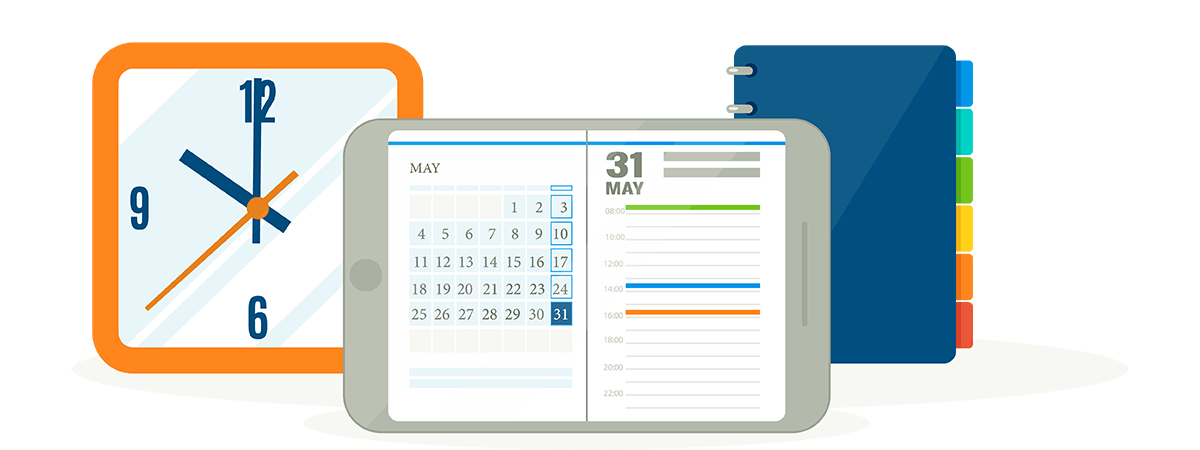5 Essential Tips for Working Remotely
Some people are work-from-home champions. For them, working from home means fewer distractions, more flexibility, and greater productivity. They have the perfect home-office setup, they stick to a careful routine, and they crank out high-quality work day in and day out. But not everyone falls into this category. For some, remote work can be quite a challenge, full of countless distractions, grueling hours, and high stress.
If you are in this second category, don’t worry—you aren’t alone, especially as so many employees are now being asked to work from home for the first time. We’ve put together this guide with the five most important tips for working remotely to help you do great work no matter where you are.
#1 Overcommunicate
When team members and managers can’t see each other sitting at their desks hard at work, it’s dangerously easy to assume the worst: “Why didn’t they answer my chat message?” “Are they even working right now?” “Working from home doesn’t mean vacation time.”
Trust is imperative for remote teams to work well together, and without proper communication, that trust breaks down. Here’s how you can keep up effective communication while working remotely:
- Set a regular time to check in on chat in the morning or throughout the day.
- Don’t hesitate to schedule a video call (cameras on) to discuss things when email and chat don’t cut it.
- Consider scheduling video check-ins that aren’t focused on work. These social meetups can help you stay connected and feel supported.
- If you need to step away from your computer now and then (which we all do), drop a note in your team chat to let them know you’re taking a break and when you’ll be back online. A quick sign-off at lunch and the end of the day is a good idea, too.
- If you need some help or support to be more effective, let your manager know. On that same note, reach out to your teammates to see if there’s any way you can help them while remote.
One of the best quotes about communication is from writer George Bernard Shaw: “The single biggest problem in communication is the illusion that it has taken place.” When working from home, it’s easy for people to withdraw into their own silos and assume everyone is on the same page—only to discover that’s not the case at all. Both employees and managers can help their teams (and themselves) become better remote workers by communicating early and often.
#2 Develop a Routine
When you work from home, your commute time shrinks to zero, your housemates become your officemates, and your breakroom is your kitchen. Because of the convenience of working from home, it’s tempting to slide out of your normal routine and stop waking up early or changing out of your pajamas. Don’t give in!
You may not be able to stick to your old routine exactly as it was, but you should still structure your day. Here’s how you can do that while working from home:
- Wake up on time, giving yourself enough time to get ready in the morning before the workday starts.
- You don’t have to put on a blouse or tie, but do the basics to get ready for the day ahead, like showering, brushing your teeth, and getting dressed. You may even want to put on shoes to help get into the mentality of going to work.
- Start the workday by deciding what you want to focus on that day. You can use a traditional to-do list or something more sophisticated like project management software.
- Organize your calendar so it includes all your meetings and appointments. You can block out time for focused work as well as breaktime activities like walking your dog or doing the laundry.
You don’t have to map out every minute of every day to be an effective remote worker, but it helps to establish a clear, consistent routine. Not only can this make you more productive, but it also helps those living with you (like kids and significant others) know when you’re available and when they need to let you focus.

#3 Take Care of Yourself
While you’re working from home, especially in emergency situations like a pandemic, you may feel pressure to squeeze every ounce of productivity out of your day. And many of us measure our productivity by how many tasks we check off our to-do lists. When things are left undone at the end of the day, we feel guilty, like we should be doing more.
That may not be the best approach, particularly if you’re still transitioning to remote work and settling into a new way of doing things. Often, slowing down and taking time for yourself are the keys to unlocking greater productivity. Here are some self-care tips for working remotely:
- Schedule regular breaks to stand, move around, get away from your computer, or eat a meal. Breaks can help you recharge and refocus, making you more effective in your work.
- Exercise and get outside regularly. Even a simple walk around the block can do wonders for your health both physically and mentally.
- Practice mindfulness to lower stress and build your focus. This can be especially helpful in turbulent times while you’re adjusting to new circumstances like working remotely.
- Be patient with yourself as you transition to working from home. Instead of focusing on how much you accomplish each day, ask yourself how you contributed. Not everything of value ends up on a to-do list.
- Set a cutoff time at the end of the day when you disconnect and “go home.” This is important for maintaining a healthy work-life balance as you work remotely.
Doing the basics to take care of yourself will make you a healthier, happier, and more effective worker whether you’re in an office or at home. Not only will you be more productive, but you’ll also avoid burning out over time despite stress and other challenges.
#4 Create the Right Environment
If you’ve never worked from home before, or if you only do it occasionally, you probably don’t have an ideal home-office setup. Maybe your “home office” is actually the kitchen table or a desk in your unfinished basement. When you don’t have a proper workspace, it can be tricky to focus on your work. Here are some strategies for creating the best home-office setup for productivity without remodeling the house:
- Designate a workspace for yourself, however small, where only work takes place. It can be one side of the kitchen table, or a lap desk and the sofa. The important thing is to set clear boundaries for yourself and others: When you’re there, you’re working.
- Communicate with others in your home to let them know you need focus time. You could even set up a sign to indicate when you’re working and when you’re taking a break.
- Make sure your space is clean with minimal distractions. The last thing you need while trying to focus on work is a constant reminder of housework that needs to be done.
- Schedule uninterrupted focus time. Eliminating distractions from your home environment won’t do much good if your email, chat, and phone notifications won’t leave you alone. Set aside time to put everything on mute (informing your team first, of course) and work without interruptions.
If you have the budget and space, it’s certainly worth investing in a more permanent home office. However, even without an immaculate home office, you can be productive and focused while working remotely if you set the right boundaries.

#5 Use the Right Tools
The previous tips for creating the right environment become even easier if you have the right tools for working remotely. There are numerous resources, both online and offline, you can use to set yourself up for success while working at home, but these are a few of our favorites:
- Get noise-canceling headphones to help you shut out distractions and concentrate, especially if you find yourself trying to work while your children or roommates are home.
- Use a standing desk or standing desk converter to get your blood flowing and relieve the strain of sitting all day.
- A comfortable chair can make or break your work-from-home experience. If you’re limited on budget or space, a seat cushion and back pad can also help.
- Try an egg timer to help you focus for stretches of time. You can also use a timer on your computer or phone if it won’t be too distracting.
These are just a few tools you can use at home to help work effectively, but there are plenty more online. And at an organizational level, your company can invest in additional tools like a chat platform or project management software to keep everyone connected while working remotely.
Conclusion
Learning to work from home effectively is tricky for anyone, let alone employees who have been asked to do so suddenly and unexpectedly. If you’re feeling overwhelmed by the unique challenges of remote work, cut yourself some slack. You don’t have to perfect these five areas right away. Instead, focus on what you can do today to improve step by step while working from home. Wake up 30 minutes earlier and go on a walk. Make a list of priorities at the start of your day. Choose one thing to buy to improve your home workspace.
As you take it one day at a time and use the tips in this guide, you can transform your work-from-home experience. Whether you’re working remotely for only a few weeks or for the rest of your career, you’ll be able to do your best.
Get caught up every month on all things HR. Don't worry, we promise we won't spam you.
Tori Fica is a copywriter for BambooHR, the leading HR software solution for small and medium businesses. Through research, analysis, and writing, she creates content to help HR professionals think and plan more strategically. Her focus is on taking complex ideas and in-depth research and turning them into clear, digestible pieces of content.









